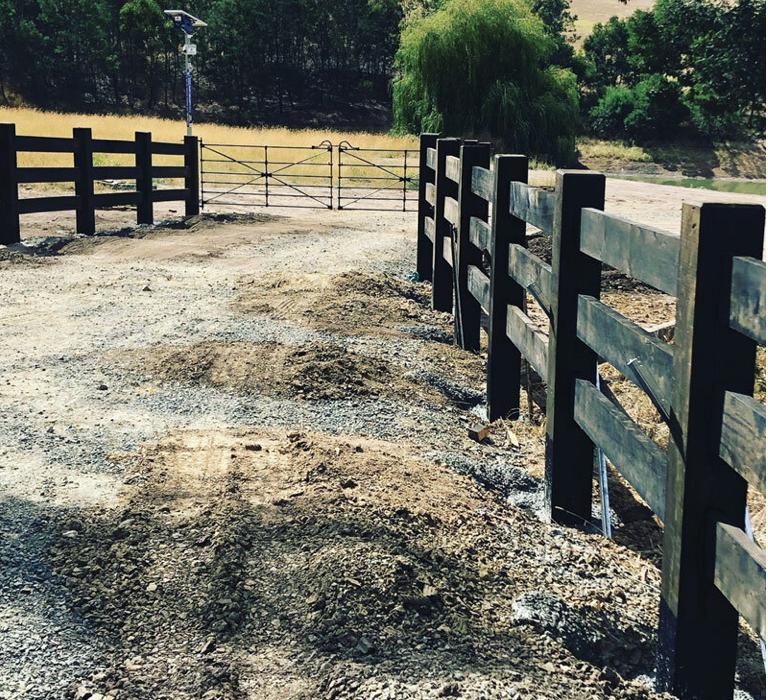
The size of your post hole and the amount of concrete to use are key factors in the amount of concrete to pour. The hole must be at least three times the diameter of the post and the depth should be at least 1/3 to half of the pole's length. This calculator will allow you to calculate the volume within the hole for the post. Once you know the volume, you can calculate the amount concrete you should pour. The calculator can be used to calculate the concrete quantity you want to buy.
If you are building a wall or fence, the post hole calculator will help you determine how much concrete you should use. Using a post hole calculator will help you determine how much concrete you'll need for each posthole. Simply enter the diameter of the post and the depth of the hole, and the calculator will tell you the exact amount of concrete you need to purchase. The calculator can be used to determine how much concrete you want to purchase.

The post hole concrete calculator will help you calculate how much concrete you need to fill your hole. Enter the dimensions of your post and the hole diameter. Based on the number and size of your posts, the calculator will determine how much concrete you should mix. Calculators will also show you how much concrete you should purchase per bag. This allows you to choose the correct amount. A post hole cement calculator may be useful if you plan to install a large fence.
Once you've selected the type of concrete and the size you prefer, the calculator will tell you how much concrete you will need for the post holes. The calculator can be used to calculate the appropriate amount of concrete needed for a job. Simply enter the number and diameter of the posts as well as the size of each post. A post hole concrete calculator will show you how much concrete you'll need for the project. A good tool to use is the Post Hole Concrete Calculator.
You can use a post hole concrete calculator for many purposes. It helps you to calculate the concrete required for a posthole in a structure. It will give you a volume of 50 pounds. Bags of the material. It also calculates the concrete required to create a posthole in soil for a particular size. Concrete calculators can also be used to calculate the required concrete for a posthole in soil.

If you're using postcrete, you'll need about 220 bags of 20kg of concrete for each post. For example, a 4-foot post should go in a 12-inch diameter post hole. In this case, you'll need to use two bags of twenty kg for the eight-foot-round. If you are using the calculator to build a fence, however, you will need to use 60 pound bags.
FAQ
Are permits required to renovate my home?
Yes, you will need permits before starting any home improvement project. A building permit and plumbing permit are required in most cases. You may also need a zoning permit depending on the type of construction you are undertaking.
Is it better for a contractor to hire or a subcontractor to do the job?
The cost of hiring a general contractor can be higher than that of a subcontractor. General contractors often have many employees and charge clients high labor costs. A subcontractor on the other side only employs one person, so he/she charges less per-hour.
What room should first be renovated?
The kitchen is the heart of any home. The kitchen is where you will spend the majority of your time cooking, entertaining, or just relaxing. So if you are looking for ways to make your kitchen more functional and attractive, start there!
It is also an important component of any home. It offers privacy and comfort for daily chores such as washing your hair, brushing your teeth, shaving, or getting ready to go to bed. If you want to improve the functionality and appearance of these rooms, consider adding storage space, installing a shower instead of a tub, and replacing old fixtures with modern ones.
Statistics
- It is advisable, however, to have a contingency of 10–20 per cent to allow for the unexpected expenses that can arise when renovating older homes. (realhomes.com)
- Most lenders will lend you up to 75% or 80% of the appraised value of your home, but some will go higher. (kiplinger.com)
- On jumbo loans of more than $636,150, you'll be able to borrow up to 80% of the home's completed value. (kiplinger.com)
- They'll usually lend up to 90% of your home's "as-completed" value, but no more than $424,100 in most locales or $636,150 in high-cost areas. (kiplinger.com)
- The average fixed rate for a home-equity loan was recently 5.27%, and the average variable rate for a HELOC was 5.49%, according to Bankrate.com. (kiplinger.com)
External Links
How To
How to Renovate an Old House?
Before you start, it is essential that you decide which type of renovation project to undertake. This could be as simple as updating your kitchen equipment or completely renovating your entire home.
Once you've decided on the type of renovation that you want to do, it is time to consider how much money your budget allows you to spend. You might find that you don't actually have enough funds to cover the full cost of the entire project. This could mean that you have to make tough decisions about which parts of your house you can afford and which you cannot.
You need to be sure that before you do any renovations you are aware of the following things. The most important thing is to ensure that you get any permits required for the job. You might also need to check whether you need planning permission for certain types or work. If you are planning to make extensions to your house, you may need to apply to the building consent.
Before you start work on the house it is best to check with the local council website to determine if additional permits are required. Make sure you check whether each section of the house needs to be given planning permission. To make sure you have enough coverage, contact your insurance provider if you intend to perform any major works, such as installing new roofs.
Next is choosing the right tools for the job. There are many choices available so make sure to do your research thoroughly. Some of the most common items that people use during their renovation projects include paint, wallpaper paste, flooring, tiles, carpets, insulation, fencing, doors, windows, lighting, plumbing, heating systems, electrical wiring, plasterboard, timber, concrete, bricks, tiling, mirrors, sinks, taps, toilets, washing machines, ovens, refrigerators, microwaves, dishwashers, vacuum cleaners, carpet cleaning equipment, air conditioning units, fireplaces, chimneys, and even garden furniture!
Be sure to consider the product's quality when choosing these products. Cheap products tend to last only a short period of time, whereas good quality products will usually last longer and provide better value for money. When you are buying any item, ensure that you only purchase what is necessary for the job. It's important to not buy too much. You could waste valuable resources and end up with a lot of wasted material. Instead, make sure you only purchase what you really need.
Finally, once you've chosen the right materials for the job, you need to figure out where you'll store them while you're working on the property. If you're remodeling a large portion of the house, you may need to rent storage space to store your materials until you're ready for them to be returned inside. You could also ask your family or friends for help moving the items.